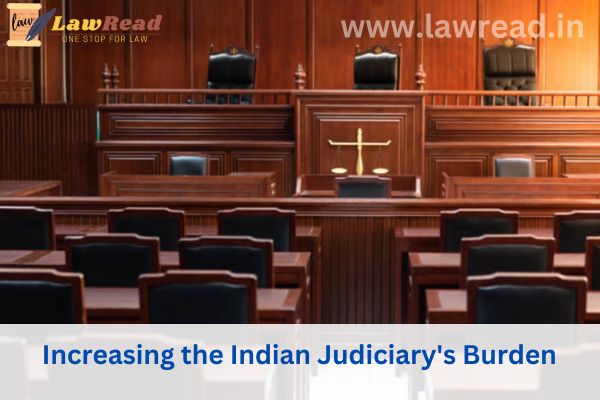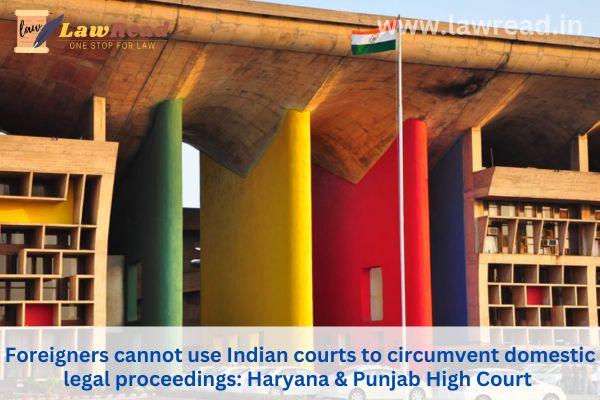Legal Trends
Justice for All and Dr. Ambedkar
.jpg)
The Indian Constitution's creator, Dr. B.R. Ambedkar, continues to inspire hope for attaining economic justice as India negotiates the challenges of its complex economy in 2025. Ambedkar's contributions to political equality and social justice are widely acknowledged, but little is known about his views on economic justice, which are ingrained in the Constitution. This essay explores the unexplored aspects of Ambedkar's economic theory as it is expressed in the Constitution and how it relates to modern-day India.
Ambedkar's Economic Justice Theory
According to Dr. Ambedkar, social and political justice are inextricably linked to economic justice. He felt that the Constitution's guarantees of equality and liberty would remain meaningless if economic disparities were not addressed. Ambedkar presented a form of "state socialism" in his landmark 1947 treatise States and Minorities, arguing for government ownership over important businesses to guarantee resource distribution. The State must make sure that no citizen is deprived of their means of subsistence, he contended (Ambedkar, 1947, p. 408).
The Directive Principles of State Policy (DPSPs), in particular, are where this vision was expressed in the Constitution. Ambedkar's economic theory is summed up in Articles 38 and 39, which call for the government to reduce income, status, and opportunity disparities and to make sure that ownership and management of material resources are allocated for the benefit of all. Ambedkar's economic principles are frequently reduced to aspirational objectives rather than binding directives because the DPSPs are non-justiciable in contrast to the Fundamental Rights, which are enforceable.
The Framework of the Constitution
Ambedkar was able to incorporate economic justice principles into the Constitution since he was the chairman of the Drafting Committee. Particularly, Article 39(b) and (c) demand that wealth concentration be avoided and that the economic system not lead to the exploitation of the weak. Ambedkar's vision in recognizing the dangers of unbridled capitalism in a very unequal society was reflected in these measures, which were groundbreaking for their day.
However, the DPSPs' implementation has been constrained by their non-binding nature. Ambedkar viewed the DPSPs as "instruments of instruction" to direct future administrations, according to academics like Granville Austin (Austin, 1966, p. 75). However, Ambedkar's vision has been marginalized by succeeding administrations that frequently place a higher priority on economic expansion than on fair distribution. For example, the liberalization policies of the 1990s went against the spirit of Article 39 by increasing income gaps even as they promoted prosperity.
Uncharted Dimensions
Ambedkar's focus on land reforms and cooperative farming is among his economic ideas' least talked-about features. In his publications, he made the case that one of the main causes of economic oppression for Dalits and other oppressed groups was landlessness. He envisioned a system that would combine state-sponsored cooperative agriculture to increase output with land redistribution to provide access for the landless (Ambedkar, 1947, p. 420). Although the demand for fair resource distribution in Article 39 reflects this principle, it is still mainly unexecuted.
Ambedkar's support for full employment as a constitutional requirement is another neglected aspect. He underlined during the Constituent Assembly debates that genuine democracy required economic security through guaranteed employment (Constituent Assembly Debates, Vol. VII, 1948). Even if programs like the Mahatma Gandhi National Rural Employment Guarantee Act (MGNREGA) try to partially alleviate unemployment, Article 41 of the Constitution nonetheless calls on the state to protect the right to work.
Significance in Present-Day India
India finds itself at a turning point in 2025. The top 1% now hold more than 40% of the country's wealth, according to the Gini coefficient, a gauge of economic inequality, which has increased to concerning proportions (Oxfam India, 2024). The persistence of caste-based economic inequities, unemployment, and rural poverty highlights how urgent it is to review Ambedkar's ideas. His appeal for government action to reduce wealth concentration strikes a chord in discussions about universal basic income and wealth taxes.
Furthermore, international initiatives for inclusive development are consistent with Ambedkar's conception of economic justice. His focus on fair resource allocation is echoed by the Sustainable Development Goals (SDGs) of the UN, especially Goal 10 (Reduced Inequalities). India might become a global leader in attaining economic justice by putting Ambedkar's principles into practice.
Difficulties and the Future
The political economy is the main obstacle to achieving Ambedkar's vision. The transformational promise of the DPSPs has been diminished by corporate-led growth, bureaucratic lethargy, and vested interests. Furthermore, the influence of DPSPs has been restricted by the judiciary's unwillingness to enforce them, noting their non-justiciable nature. According to legal expert Upendra Baxi, in order for the judiciary to understand DPSPs as essential to Fundamental Rights, it must take a more activist approach (Baxi, 2008, p. 112).
India needs to give structural inequality policies top priority in order to operationalize Ambedkar's vision. Steps in this regard include enacting equitable taxation, strengthening land reform legislation, and growing employment guarantee programs. In order to ensure that Ambedkar's economic ideas are not limited to social justice alone, civil society and academics must also contribute to the revival of this conversation.
The Constitution's incorporation of Dr. B.R. Ambedkar's idea of economic justice continues to be a potent but little-studied framework for resolving India's disparities. His theories provide a road map for creating a society that is inclusive and just as the country struggles economically. India can respect Ambedkar's legacy and realize the Constitution's promise of economic fairness for all by adopting the spirit of Articles 38 and 39.
Citations:
· States and Minorities. Ambedkar, B.R. (1947). Bombay: Thacker & Co.
· G. Austin. 1966. The foundation of a nation is the Indian Constitution. Clarendon Press, Oxford.
· U. Baxi (2008). Human Rights' Future. Oxford University Press, New Delhi.
· Debates of the Constituent Assembly, Vol. VII (1948). Lok Sabha Secretariat, New Delhi.
2024 Oxfam India. Inequality Inc.: The Widening Wealth Gap in India. Oxfam India, Delhi.












